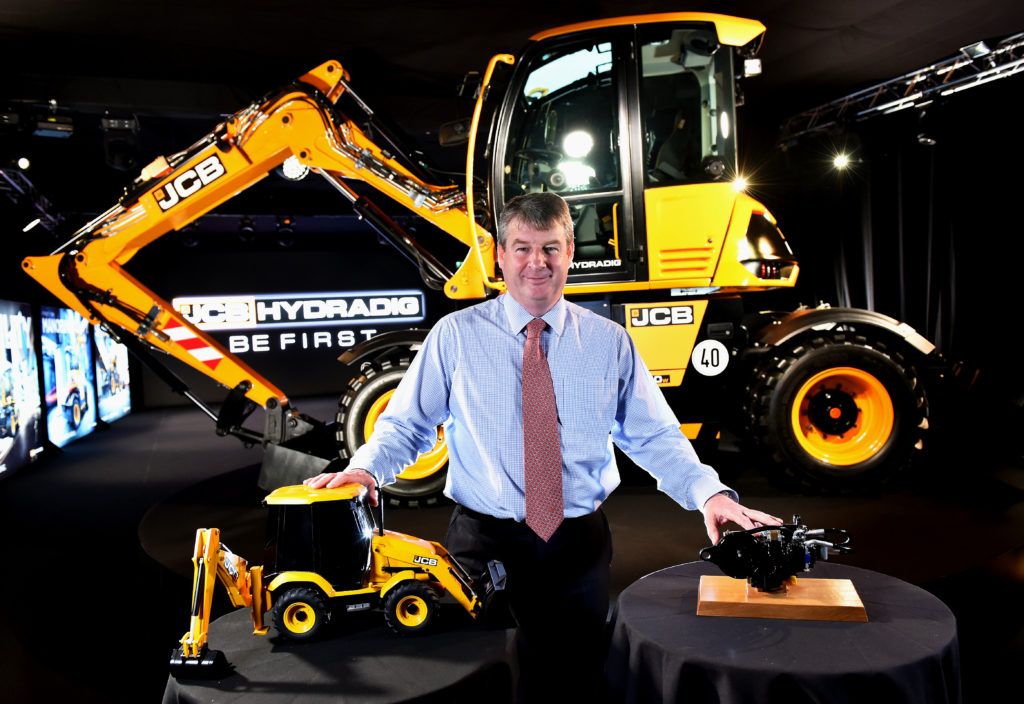By Jesse Coors Blankenship, senior vice president of advanced development at PTC, Inc.
Industrial vehicles built the infrastructure to support our 21st century economy. But the methods for building these vehicles have hardly changed since the middle of the 20th century.
Whether it’s excavators or bulldozers, industrial vehicle manufacturing is traditionally driven by weldments, in which components are cut from steel plates and welded together. It’s an inefficient process, leaving behind tons of scrap metal and creating components that are unnecessarily bulky. Fortunately, generative design coupled with additive manufacturing presents a promising alternative.
Generative design is an emerging CAD technology where artificial intelligence (AI) optimises designs for the parameters and objectives specified by the engineer. For example, when optimising for mass reduction, the algorithm will find areas in the design space where material can be removed without sacrificing the structural integrity or strength of the design. The resulting designs often rely on complex and organic geometries, as if inspired by biology.
In the past, engineers could only use such AI-generated topologies as inspiration, the forms themselves being too complex to be realistically manufactured. This meant the engineer had to modify the form so that it could be fabricated with traditional manufacturing methods, such as injection molding or steel plate manufacturing. With the advent of additive manufacturing however, it suddenly became much easier to realise the highly-efficient organic forms created by generative design.
Optimisation for manufacturing, specifically additive manufacturing, is a major advancement in generative design. Designers can set specific manufacturing constraints in their CAD environment, and the algorithm will optimise the design to be manufactured with the fabrication methods specified by the designer, whether it be additive, casting, milling or other techniques.
Functionally, this will dramatically shorten cycles between designers and manufacturers, as designers submit CAD models ready for manufacturing with minimal back and forth. And as 3D printers become more ubiquitous, generative optimisation for additive manufacturing will allow for the rapid creation of highly efficient parts, with weight reductions as high as 50%, or even more.
To illustrate how this works, consider the boom arm of an excavator. The existing design is essentially a hollow steel box made of welded steel plates, also known as weldments. To optimise this design, the engineer would feed the existing CAD file through a generative design tool, set the maximum force load vectors expected to act on the arm, and the generative algorithm would find areas in the design space where mass could be removed without sacrificing the strength of the arm, evenly distributing stress. AI then finds the best solutions for the design goals specified by the engineer.
Together, these technologies accelerate design velocity, increase innovation, and, in the end, create more efficient vehicles. High-performance computing and advanced generative algorithms can process thousands of design evolutions in parallel, accelerating innovation past the limits of the human mind. Unconstrained by the human biases toward straight lines and polygons, generative design frees designers to explore the full spectrum of design possibilities, boosting their productivity and improving their output.
Not only can generative design lead to more efficient vehicles, it can lead to greater product differentiation as well. The beauty of generative design is that it uncovers the best potential solutions to any design challenge. Naturally, different companies will choose different AI-generated solutions to implement and bring to market.
Generative design also opens the door to on-demand parts with greater customisation and shorter lead times. Customers can specify which properties they value most, whether it be enhanced strength, weight, or some other variable, and the manufacturer can use generative design to quickly modify the design to meet their needs. Lead times for custom parts collapse as manufacturers shift to additive manufacturing, eliminating the need for extensive tooling to reconfigure the manufacturing process.
With additive manufacturing, it also becomes possible to reduce overseas production and shipping. Components can be printed and assembled in-house instead of importing them from abroad. Savings on shipping costs alone will, as a result, have a significant impact on manufacturers’ bottom line. Combine this with the productivity improvements generative design can bring and the material savings associated with creating lighter components and you begin to see the broad impact generative design and additive manufacturing will have on the entire industrial vehicle market.
AI is increasing the efficiency of almost every sector of the economy, and the industrial vehicle sector is no different. As generative design upends the conventional notions of how heavy equipment is designed and manufactured, and as these vehicles in turn become autonomous, it will transform entire industries. The question for industrial vehicle manufacturers today is: are you ready?





